
Image source unknown
A common career advice question I get all the time is what the tradeoffs are between going to a startup vs. going to a big company. There are many things to consider and lots of “it depends” when it comes to where you are in your career, where you live etc., but when it comes to the general aspects of a startup vs. mature company, most of the situations don’t vary that much. I’ve done both, several times, so here’s a perspective on the tradeoffs based on my own experiences.
Startup vs. Mature Company
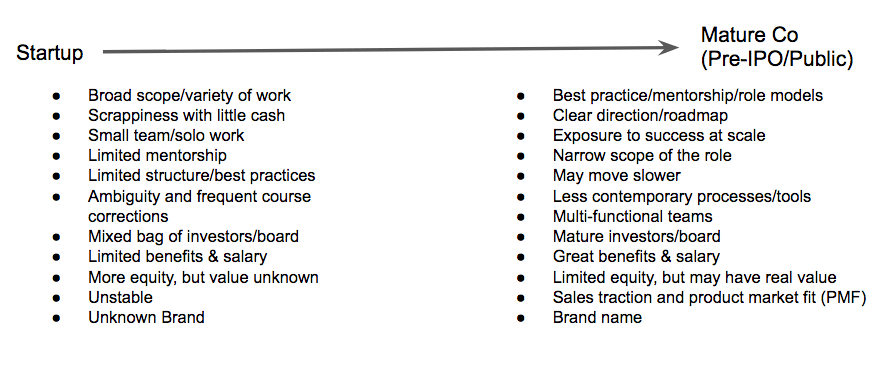
(c) 2018 Julia B Austin
Putting aside for a moment industry and how you feel about the products the company is building (both of which are very important!), most of the differences between a startup vs. a mature company are pretty obvious. In a mature company, you will likely have more role models to learn from and stronger teams to collaborate with, a clear direction and a mature board. The role you consider may have a narrow scope, but could offer deeper learning and of course great benefits, compensation, etc.. You’ll also get exposure to what good (or bad) looks like at scale and possibly a nice brand for your resume.
Startups can offer a chance to do “all the things” which can be either a blessing or a curse depending on your interests. You may miss out on having peers to collaborate with, have to look outside of your company for mentors and role models or have limited budget to get stuff done, but you may get high value equity in exchange for lower than market-level pay. If you want to dig more into deciding which startup to join, I suggest Jeff Bussgang’s book Entering Startupland which goes deep on the different roles at startups and how to get your foot in the door.
Leadership
One thing often overlooked when considering a new job is the leadership of the company. Serial entrepreneurs will have a very different approach than someone who has limited real-world experience and mature company executive teams can be world class or “legacy” leaders who can’t move with the times. There are many tradeoffs when factoring in leadership into the decision process of startup vs. a mature company.

(c) 2018 Julia B Austin
Startup founded by serial entrepreneurs: This can often be the best case scenario if you want to learn from those who have “seen the movie before”. They likely had no issue raising money and were selective on who their investors were and who sits on their board. They will know how to get the flywheel moving incited by past mistakes OR failures.
“When I started my fifth company I knew exactly how I wanted to build the team. So, on day one I hired a head of recruiting to get things off to a strong start. I also knew market adoption would be critical to fundraising so focused on growth very early on – before we even had a product!” – David Cancel, CEO & Co-Founder Drift
Serial entrepreneurs may also try to overcorrect in areas where they failed the first time, such as over analyzing or delaying decisions, being too conservative on cash flow or focusing too much on scalability too early in the product development process. If you’re interviewing with a serial entrepreneur, it’s always good to ask what lessons they learned in their last startup and how they’re bringing those lessons into their new venture.
“I joined Drift in part because I wanted to learn from the experience of the co-founders. They’ve seen it before so they anticipate issues, they know when (and how) to hire experts to level up the team, and they know what’s “normal” for a hypergrowth company. It’s the best of both worlds: you get the rollercoaster startup experience with some of the more measured leadership and strategic characteristics of a bigger company.” – Maggie Crowley, Product Manager Drift
Industry veterans doing their first startup: Founders coming from mature companies with no startup experience can have big company confidence, be great at hiring and leading teams, but lack scrappiness to get a Minimum Viable Product (MVP) out the door and work towards product market fit.
“At our first startup after a series of roles at large enterprise software companies, we tried to force a big company perspective on how we did employee feedback and reviews. We were too structured with this initially and quickly cut back to a more loose feedback and review process with our team.” Izzy Azeri & Dan Belcher, Co-Founders Mabl
They may also be too used to having teams of people and systems in place to cover the more mundane duties of running a company and don’t want to get their hands dirty. On the flip side, they often know how to implement those processes and know the people to hire to run them so once the flywheel is moving and cash is in-hand, they can get momentum quickly.
“Earlier in my career, I hired a small team within a large corporation that was scrappy and had entrepreneurial mentality. At my startup, I quickly realized the benefit of once having a corporation behind me when things weren’t working out. The impact of a bad decision or process was much greater with no safety net.” – Karen Young, CEO & Founder Oui Shave
Startup with limited leadership experience: Working with a skilled group of founders leading teams for the first time can be tons of fun. If you bring some experience to the table, it can be very gratifying to not only work from the ground up, but also work alongside these founders as they grow. However, it can be frustrating if you find yourself figuring out things on your own because there’s no one in the company to mentor you. These situations can be very rewarding if you’re patient and you can always get outside mentors and advisors if they’re not available at this type of startup.
“When we started, we got a lot of advice like: stay focused, don’t expand too quickly, be careful that experienced hires match your culture. All good advice, but we discovered there’s no real substitute for learning the hard way. The lesson just doesn’t sink in until you feel the pain of doing it wrong.” Wombi Rose, CEO & Co-Founder LovePop
Mature company with inexperienced leadership: If they made it this far, they are either wicked smart, lucky or both! More likely they also have surrounded themselves with strong, experienced leaders, investors and/or board members. You can learn a lot from joining a company like this, but they are very, very rare! When companies scale too fast, they can also suffer from having people in roles that have outgrown their experience. Read more about the impact of Hypergrowth situations written by my friend at Reboot, Khalid Halim, for First Round.
Mature companies with experienced leadership: These organizations have all the standard things you’d expect. Probably more politics and process than you’d ever find at a startup, but the benefit of exposure to great role models and best practices can be invaluable. Sometimes, these bigger companies can also expose you to the “dark side” of leadership and processes which are also great learnings on what not to do in your next job or company you may start yourself.
Which comes first in your journey?
For those doing early career path planning and knowing they want to do both a startup and a mature company at some point, there’s always the question of which should come first. Hiring managers at early stage companies can get “spooked” when they see someone with too much time (5+ years) at mature companies; questioning whether the candidate will be able to transition to startup life. Not that it’s impossible, but it’s something to consider. For these candidates, I suggest highlighting any scrappy “ground zero” work they may have done at their companies to demonstrate they can handle ambiguity and take risks. I am also a huge (and very biased) fan of people who’ve joined companies early and scaled with them. They have learned a TON from those experiences and can often start scrappy, but know how to operate at scale. Win-win.
Conversely, someone with a lot of startup experience may have a hard time adjusting to mature company. A hiring manager at a mature company may question whether a candidate with only startup experience can handle a slower pace or won’t know how to navigate a complex organizational structure that requires political and communication savvy. You may have to sacrifice title and maybe some salary to get a foot into larger institutions who may view your past role, which may have been very senior at a startup, to being pretty junior if those around you have decades more experience. However, I always find those with startup experience can be invaluable to a team that needs to be shaken up, take more risks or explore new ground. Often, those who sacrifice title and pay when they joined, make it up fast as they move up the chain in a larger organization.
There’s no right or wrong place to start. A lot depends on how you define your skills and how willing and patient you are in either case to adjust. Much can depend on who hires you and their management philosophy. I’ve seen some people bounce between both types of situations over and over, some that just can’t handle startup life, and others who have startups in their DNA and should just stick with that world 🙂
“At a startup, every job matters and you can see almost daily that you are creating something that wasn’t there before. You have the ability to learn quickly and have a fast feedback loop to let you know how you’re doing. It’s very different working at an established company vs a startup, but you can learn a lot at both – you’ll just learn very different things.” – Rebecca Liebman, CEO & Co-Founder LearnLux
Questions To Ask
Regardless of whether you are a seasoned veteran or fresh out of school, as you ponder whether you want to join a startup or a mature company here are some final things to consider:
- What tools do you want to add to your toolbox? Will the role allow you to hone skills you already have or add new ones?
- Who do you want to learn from, and how do you want to learn? You can learn from experienced colleagues and mentors, but having bad role models can also teach you a lot about what not to do. Similarly, if you are an experienced hire coming into a company started by inexperienced founders, you may want to learn by mentoring or teaching these young leaders. Taking the skills you’ve developed over your career and applying them to a new situation in itself can be a very enlightening experience.
- Who do you want to work with? How important is the size and culture of the team you’ll work with? Remember, you’ll probably spend more waking hours of the day with these people than anyone else in your life – regardless of the size and nature of the company you join.
- What do you value? At the end of the day, love what you do and decide what role will allow you to maintain the integrity of who you are and who you aspire to be!
Do you have other tips on how to decide whether to join a startup vs. a mature company? Please share in the comments!


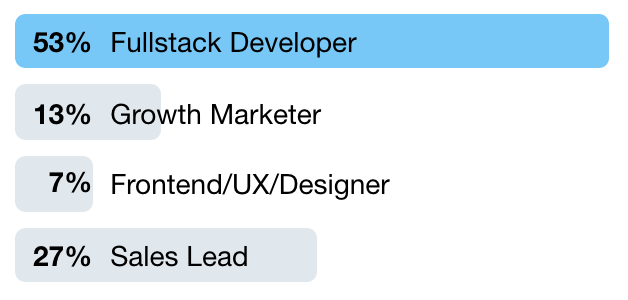








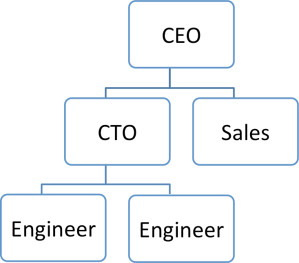



 A recurring theme I’ve encountered this summer is which lenses you should apply when evaluating the performance of your growing organization. As an advisor and executive coach to early stage companies, I’m finding more often I am preaching the concept of the “Three P’s: People, Processes and Programs”. Looking at your company or department through each of these lenses and asking yourself how you’re doing in each area can be very telling. It helps you understand where you may need to improve to continue to scale and reach success.
A recurring theme I’ve encountered this summer is which lenses you should apply when evaluating the performance of your growing organization. As an advisor and executive coach to early stage companies, I’m finding more often I am preaching the concept of the “Three P’s: People, Processes and Programs”. Looking at your company or department through each of these lenses and asking yourself how you’re doing in each area can be very telling. It helps you understand where you may need to improve to continue to scale and reach success.

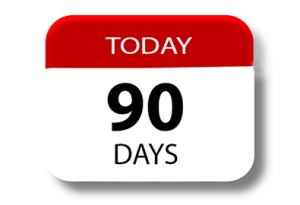
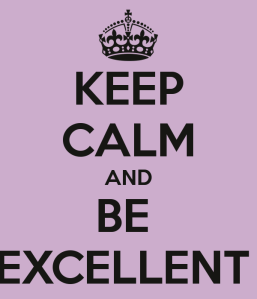
 led the trigger this summer and decided it was time to head back to work full-time after a year-long hiatus, I knew I wanted to do something meaningful and interesting. I had just finished a stint as an EIR at
led the trigger this summer and decided it was time to head back to work full-time after a year-long hiatus, I knew I wanted to do something meaningful and interesting. I had just finished a stint as an EIR at 
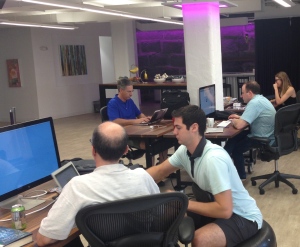 volve the solution until perfect. We don’t want to be heavy handed on defining the solution. We trust the founders to do that. We are just very, very active helpers. This is what makes us a Foundry. We have hired a lean, but extremely talented team of designers, engineers and product people that are assigned to work with our intentionally small set of companies we invest in at a time (3-4, max). We set no specific timeline on how long each company can hang out at Blade, but our goal is to help each company launch successfully with a solid team and a healthy series A. Because Blade can assign significant industry talent on a startup, as well as Blade management assistance, Blade takes some co-founder equity in the venture; the amount varies per deal.
volve the solution until perfect. We don’t want to be heavy handed on defining the solution. We trust the founders to do that. We are just very, very active helpers. This is what makes us a Foundry. We have hired a lean, but extremely talented team of designers, engineers and product people that are assigned to work with our intentionally small set of companies we invest in at a time (3-4, max). We set no specific timeline on how long each company can hang out at Blade, but our goal is to help each company launch successfully with a solid team and a healthy series A. Because Blade can assign significant industry talent on a startup, as well as Blade management assistance, Blade takes some co-founder equity in the venture; the amount varies per deal.